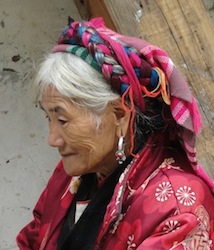Sichuan Pumi Profile
Autonym: phrin mi
Other names: Prinmi, Prmi, 四川普米
The people group in Sichuan and Yunnan who call themselves “phrin mi” in their own tongue, and who all speak a form of the same Qiangic language and practice similar customs, are officially classified as Tibetan in Sichuan and Pumi in Yunnan(9). This is one of the interesting features that came out of the state ethnic classification project of the 1950s. At that time, the phrin mi in Sichuan’s Muli County had a strong tradition of Tibetan Buddhism and were keen to be counted as part of the Tibetan nationality, whereas the majority of those south of the border, being polytheists, had no such leaning and so were eventually given a separate status called “Pumi”. Today in ethno-linguistic discussions the entire group is often referred to as Pumi.
About 30,000 Sichuan Pumi live in Muli County (where they are the largest ethno-linguistic group), with smaller numbers also in Yanyuan and Jiulong Counties. In most of the Pumi strongholds of Muli, family homes have shrines and pictures of the Dalai and Panchen Lamas, and they call in monks to perform rituals(10). Here, the Pumi language still thrives. In central Yanyuan, by contrast, where the Pumi in some neighborhoods number less than 5%, Chinese (Sichuan dialect) and Nuosu are mainly spoken, and there tends to be a mere token observance of Tibetan Buddhism. The Pumi language was once thought to be neatly sub-divided into northern and southern dialects, roughly following the religious divide, but subsequent research indicates that the linguistic map is by no means so clear-cut.


